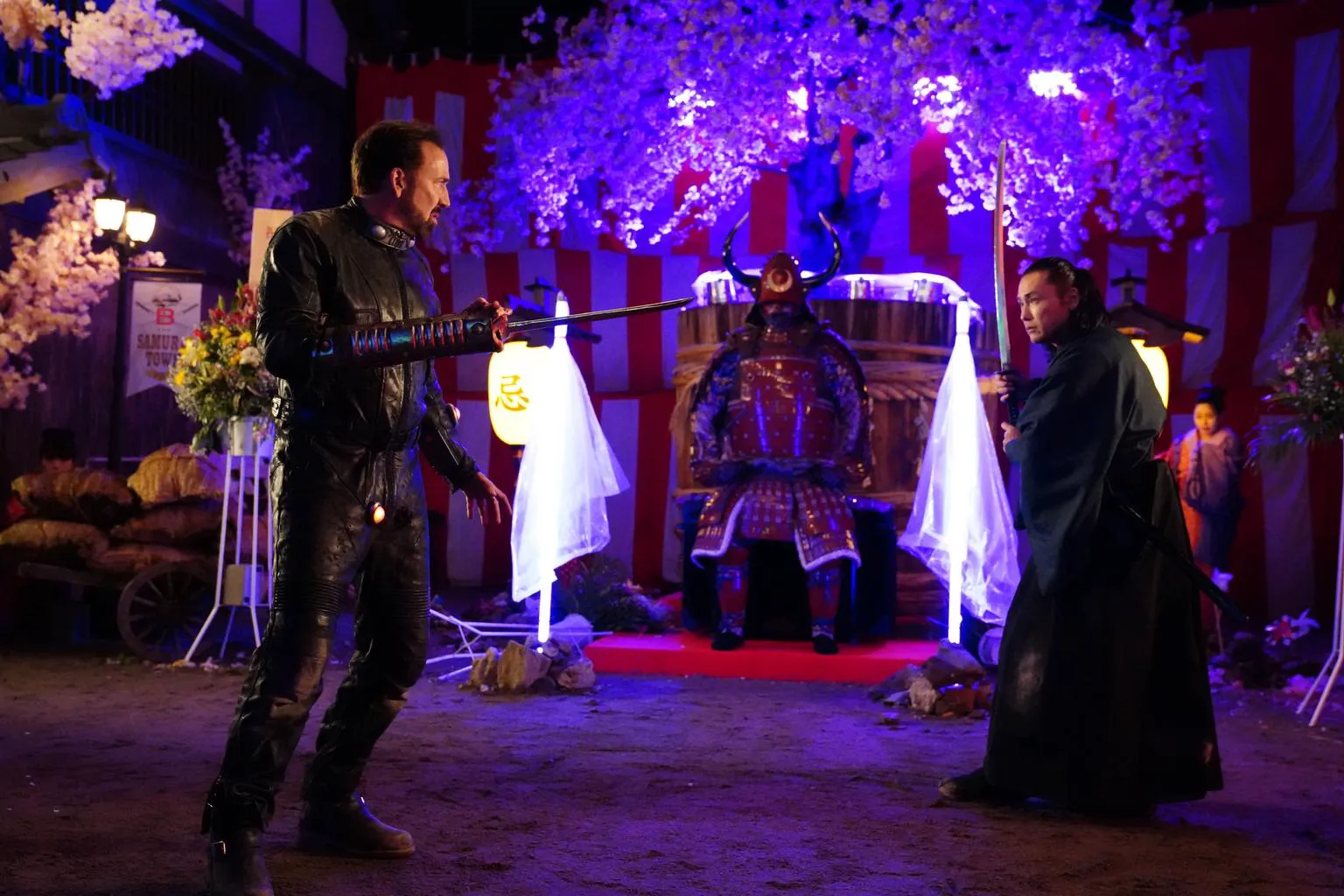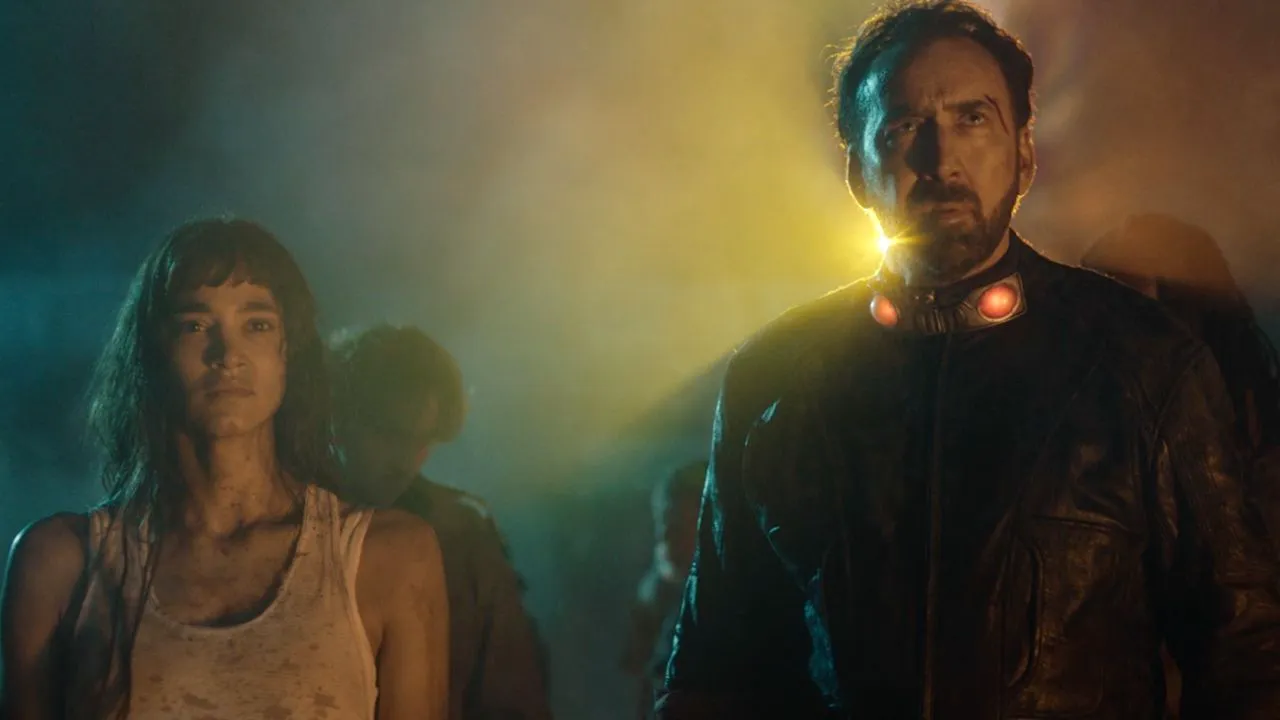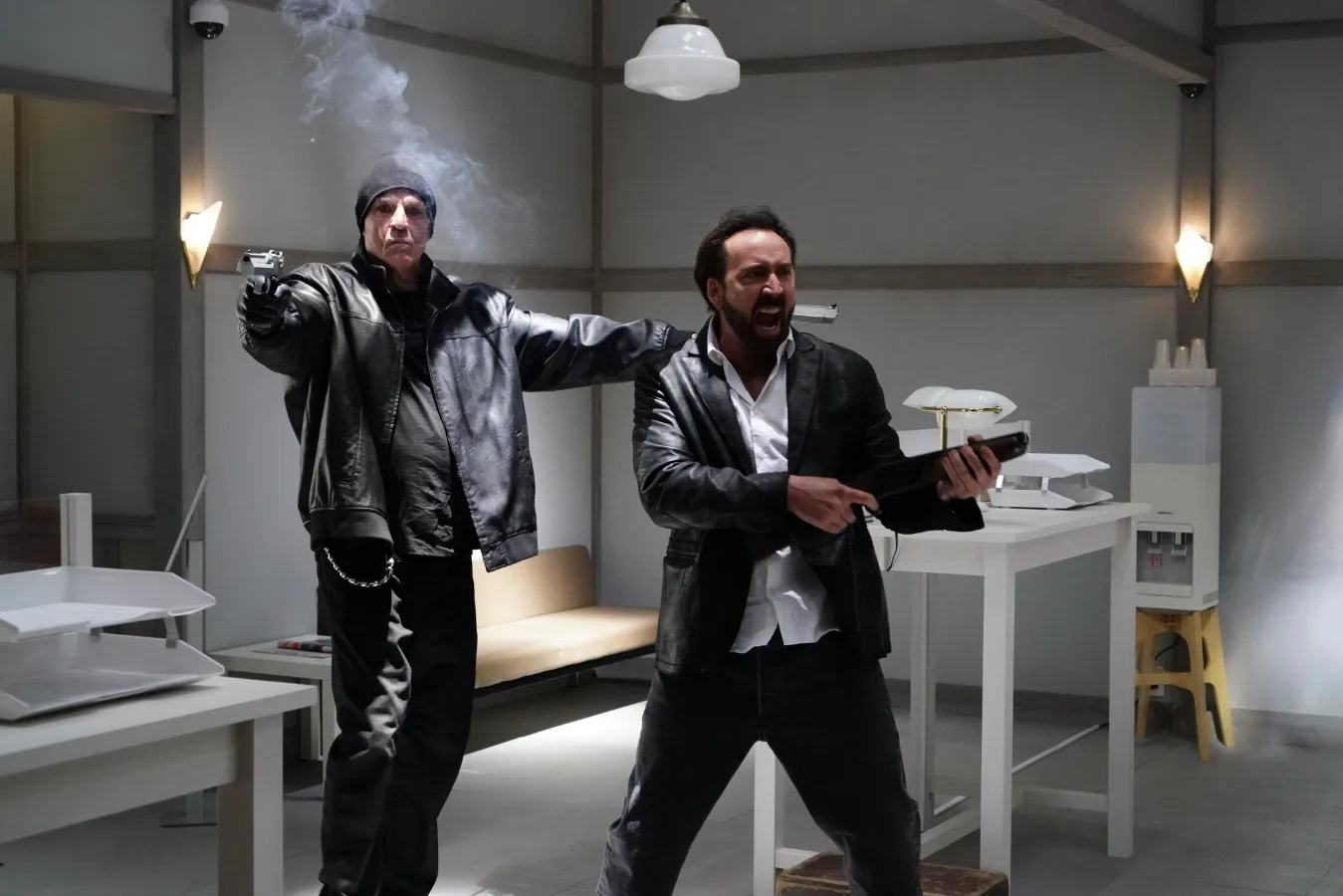A Wild Ride Through Sion Sono’s “Prisoners of the Ghostland”
In “Prisoners of the Ghostland,” Nicolas Cage embodies a character known simply as Hero, clad in traditional Japanese garb and languishing in a cell. His impending doom is averted by the arrival of the Governor, whose domain is a bizarre fusion of feudal Japan and the Wild West, complete with katanas, revolvers, and smartphones. Strapped with explosives to his nether regions, Hero is tasked with retrieving the Governor’s runaway daughter. Failure means a literal explosive outcome. Thus, Cage embarks on his quest, armed with nothing but a child’s bicycle, into the eerie Ghostland.

Nicolas Cage as Hero in “Prisoners of the Ghostland”
Sion Sono: The Master of Genre-Bending
Director Sion Sono, known for his prolific output of roughly three films per year, crafts movies in a style that can be described as high-art B-movie. He first gained international recognition two decades ago with “Suicide Club,” a disturbing anthology about teenage suicide. During that time, Japanese cinema was experiencing a surge of international acclaim, with directors like Takashi Miike (“Audition”) and Park Chan-wook (“Oldboy”) pushing the boundaries of genre. However, Sono has never confined himself to horror. His filmography is diverse and consistently intriguing, ranging from explorations of female sexuality in “Antiporno” to reflections on Japan’s nuclear trauma in “The Whispering Star,” and even a rap musical, “Tokyo Tribe.” Despite his genre-hopping, Sono remains true to his unique style, imbuing his films with a dreamlike quality, dark humor, sex, and gore.

Nicolas Cage as Hero in “Prisoners of the Ghostland”
Cage’s “Craziest Movie” Falls Short
It’s no surprise that Nicolas Cage, an actor who has solidified his status as a trash-cinema icon, would be drawn to Sono’s English-language debut. Cage himself has called it the “wildest movie” he’s ever made, but unfortunately, this claim feels more like marketing hype. While fans may have hoped for a truly unhinged experience, “Prisoners of the Ghostland” feels surprisingly tame compared to Sono’s previous work. Stripped of its action sequences, the film is a rather static, stagey affair. Despite the presence of geishas and rat-people, the film is bogged down by endless exposition. The kitsch feels superficial, failing to permeate the film’s core. Perhaps the director’s heart attack before filming or the use of an unfamiliar script due to cultural barriers are to blame. Regardless, the colorful exterior hides a rather conventional message of good versus evil.
A Muddled Message
“Prisoners of the Ghostland” feels like a dated political caricature, with the Governor’s banner proclaiming “Make this country great again.” It also serves as a memorial to tragedy, with the Ghostland’s inhabitants, living in a junkyard city, setting their clocks to 8:15 (the time of the Hiroshima bombing). Furthermore, it’s a familiar tale of a strong white man grappling with guilt, seeking redemption by saving the Governor’s daughter. While these elements are present, the film’s didactic approach ultimately undermines its entertainment value. Where Sono once delivered vivid imagery, he now offers heavy-handed illustrations.

Nicolas Cage as Hero in “Prisoners of the Ghostland”
Glimmers of Madness
Despite its flaws, “Prisoners of the Ghostland” offers glimpses of Sono’s signature madness. The film’s aesthetic is deliberately amateurish, resembling a low-budget theater production. At times, it’s so bad it’s good. The narrative occasionally disregards its own logic. Cage’s character is repeatedly knocked unconscious and wanders through the same dream sequence multiple times. A Chekhov’s gun is fired prematurely, and the most anticipated showdown is anticlimactically resolved. These moments of ironic rule-breaking provide a breath of fresh air.
A Lecture Disguised as a Carnival
Ultimately, the film’s various threads converge into a collection of platitudes: nuclear weapons are a mistake, capitalists are evil, killing children is wrong, and self-reproach is futile. What promised to be a carnival turns out to be a lecture disguised as a costume party. And as it turns out, forced fun is even more boring than the most pretentious cinema.